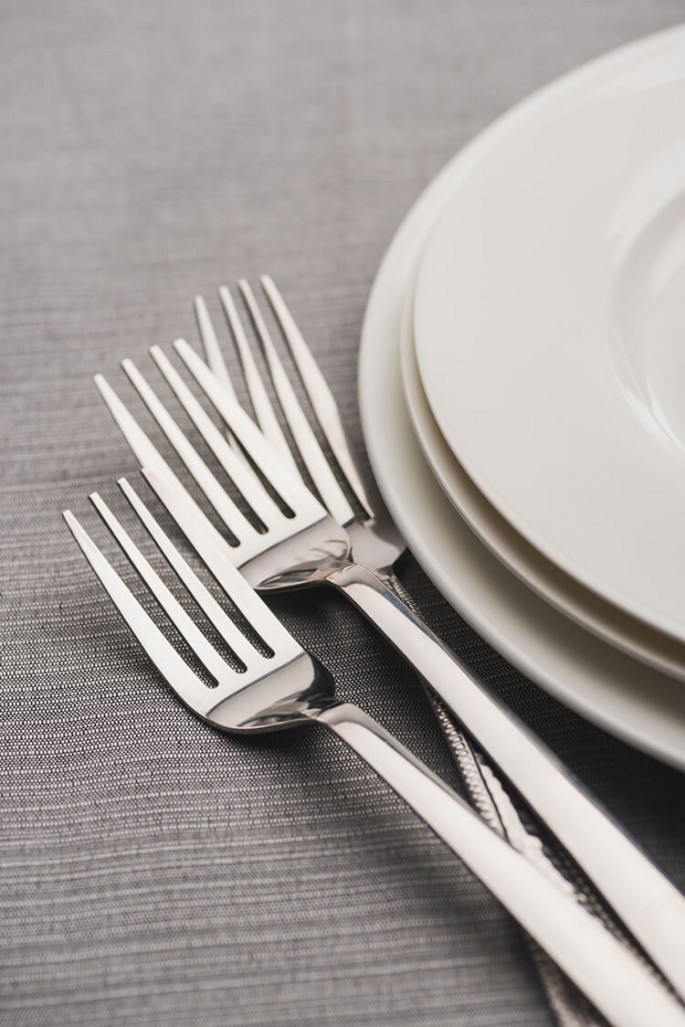Cutlery and Table Etiquette: improve your Table Manners by following these simple rules

Have you ever attended a formal dinner and wondered how to navigate the amount of cutlery displayed on each side of the plate? This table etiquette guide will show how to use all cutlery correctly and how to position them during the meal according to the situation.
Firstly, it is fundamental to know that when setting a formal dinner table, all of the cutlery needed for said meal will be displayed around your plates. Whether the meal is simple or elaborate, the forks will always be displayed to the left of the plate, whilst knives and spoons will be displayed to the right of the plate.
All cutlery will be positioned to be used from the outside in, therefore any cutlery for the starter meal, or soup spoon will be the ones closer to your hands. Any dessert cutlery will be placed at the top of the plate, positioned horizontally across the table and butter knives are usually placed to the left of the main plate, on top of their own butter plate.
Glasses and napkins are another frequent topic of discussion. In a formal dinner, there should be three separate glasses: one for water, one for red wine and one for white wine. The red wine glass sits between the other two glasses and it is generally a slightly bigger than the white wine glass, so that the red wine can aerate, once poured into the glass.
Napkins are placed either on the plates if they have an elaborate fold or to the right side of the plate if they are a little simpler. Contrary to common belief, a napkin should never be placed inside a glass. Once the meal has started one may place their napkins on their laps however it is definitely not accepted to place it around the neck.
During the meal cutlery may be used to leave brief messages to the staff and other people sitting at the table; when taking a break, one should position the cutlery in an inverted V shape, with fork and knife converging at the top. If finished with the course, one should place the cutlery in a cross-like shape with the knife crossing the plate horizontally and the fork crossing the plate vertically.
To show appreciation for a course, cutlery can be placed parallel to one another, with both knife and fork pointing to the right of the plate, whilst when the knife is placed through the fork dents in an inverted V shape, it is to symbolise that the meal wasn’t appreciated. Finally, cutlery may be displayed vertically across the plate to communicate that one is finished eating and that the plate can be removed.
No matter how experienced one is, table manners can feel quite overwhelming. Try and apply these simple concepts to your dinner to create a smoother experience.
Here at staff of distinction we offer a range of household services include, housekeeping, chefs, bulters.


